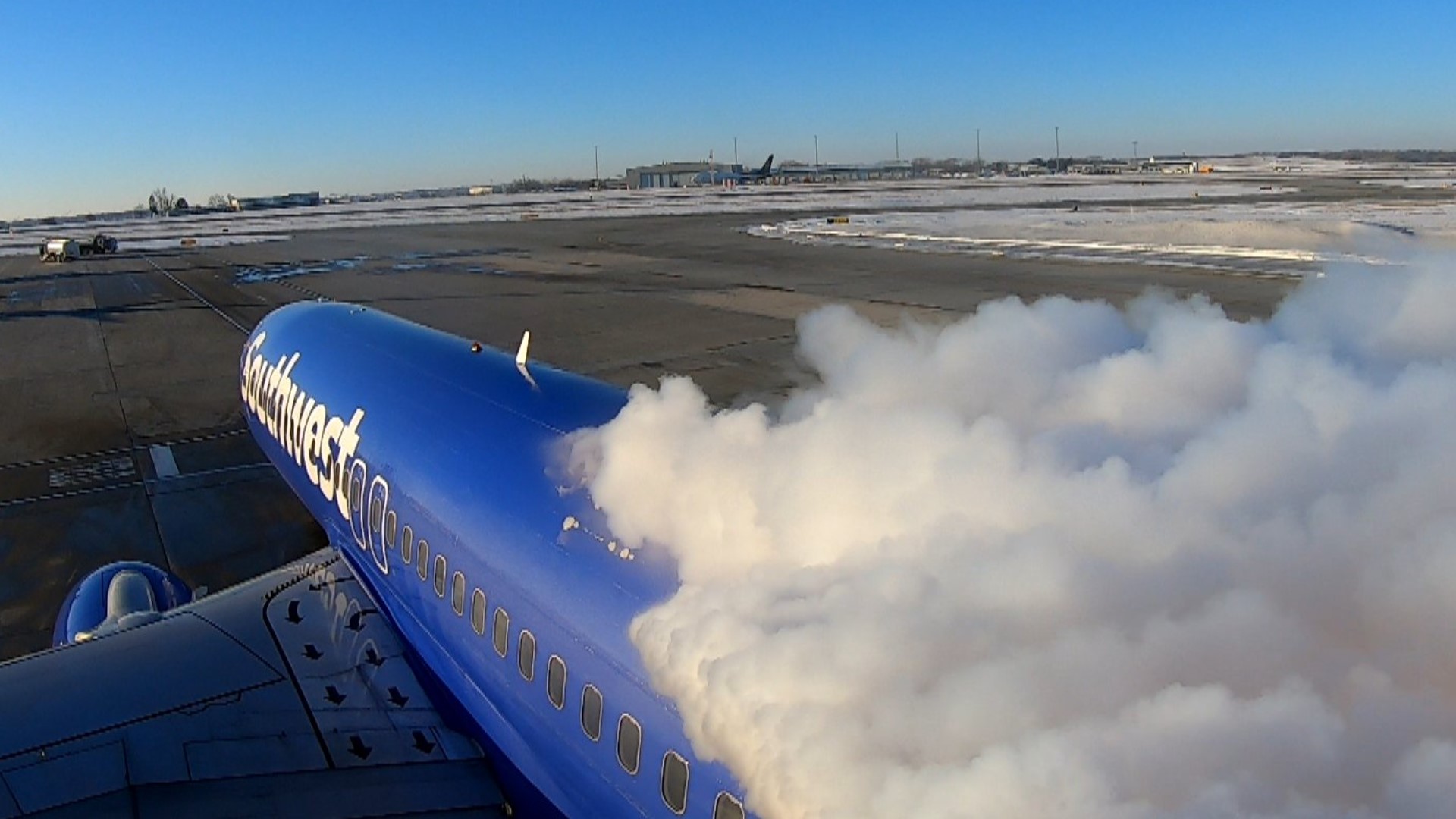DES MOINES, Iowa — Southwest flight 931 is a regularly scheduled flight from Des Moines to St. Louis. But on Wednesday morning, it couldn't leave right away.
BJ Mumm and Eric Rice were the crew on the case. BJ drove the truck while Eric was the man in the bucket, de-icing the Boeing 737 with a special compound that resists ice or frost: propylene glycol.
There's two different types of it that are used, depending on the surrounding weather conditions.
"It's a two-step process. First step is cleaning off the aircraft with Type 1, an orange fluid. It's diluted with water and heated to about 180 degrees. That creates a clean surface for airflow on the plane," said Sean Kuhl, general manager of Signature Flight Support. "If there's active precipitation falling, then we use Type 4, which is a green-colored fluid."
Just because temperatures are below freezing does not mean your plane will be de-iced before it starts taxiing. Humidity values must be greater than 80% for frost to form on the surfaces of the fuselage or wings.
Related Stories
The captain and first officer have the discretion whether or not to de-ice. Airlines are responsible for de-icing their own aircraft as well.
Not treating wings with de-icing fluid leads to a vast drop in lift when a jet starts, as much as 30% with even just a thin layer of ice or frost.
"Wave to those folks out there. They're busting their humps to make sure your plane gets to its destination safely. Everybody treats it as if they have a family member on board," Kuhl added.
► Download the We Are Iowa app
► Sign up for Local 5's "5 Things to Know" email newsletter
► Subscribe to Local 5 News on YouTube
Watch: New art installation revealed at Des Moines International Airport

